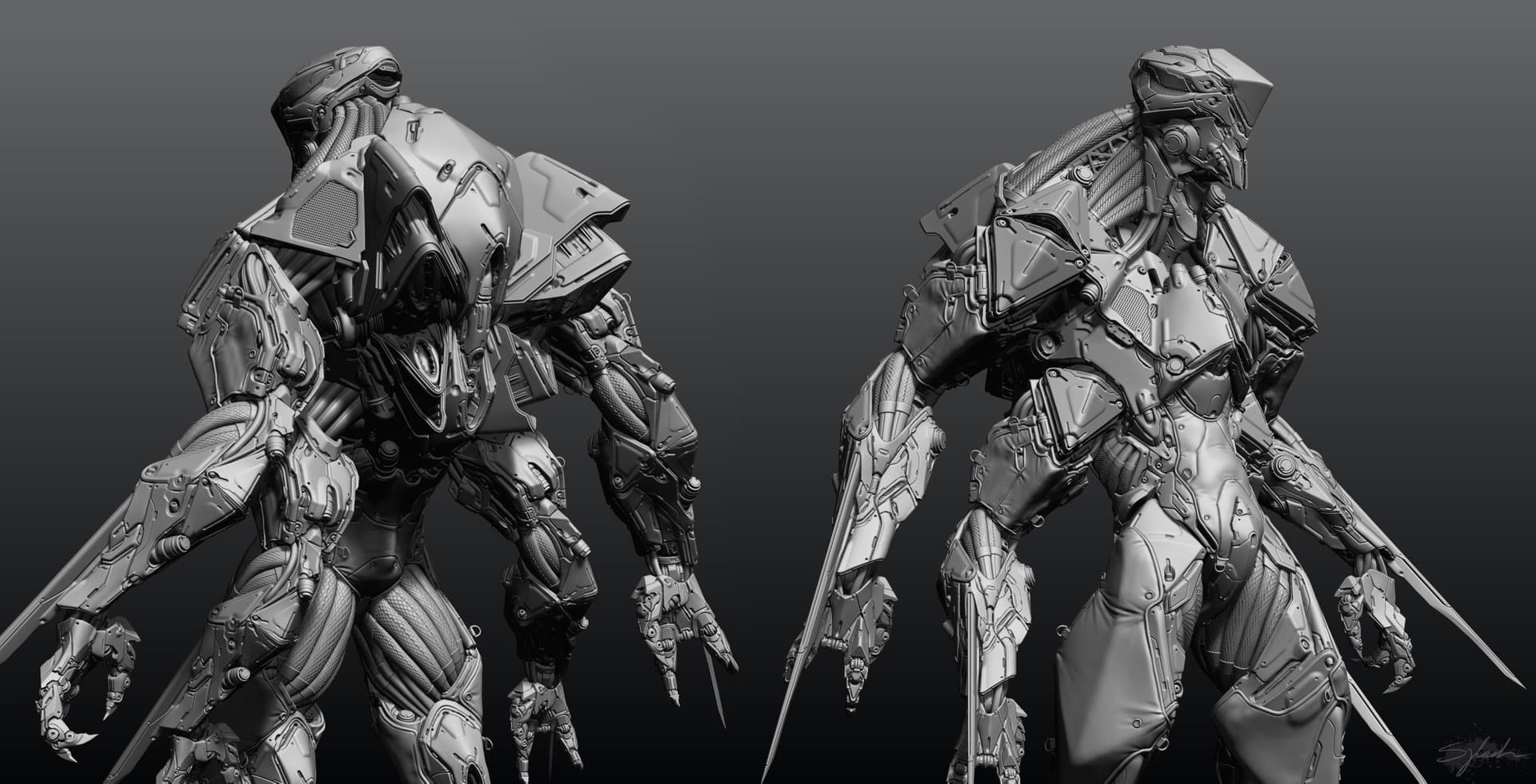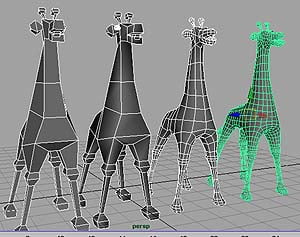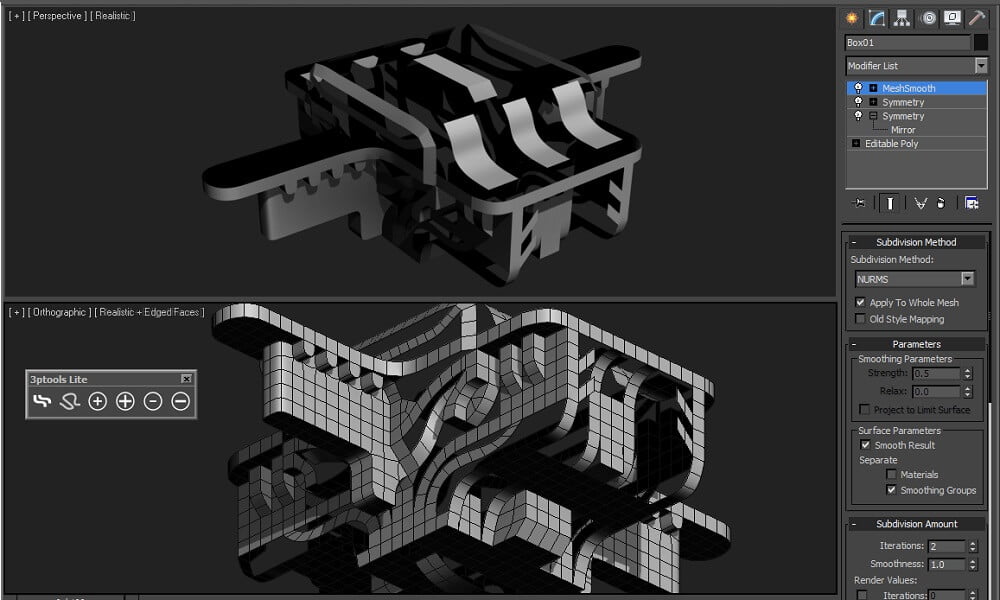What is 3D modeling?

How is it used?
It is a computer graphics technique that allows you to develop a digital 3D representation of any object, living or inanimate. This representation is called a 3D model. You may choose to create a physical representation of the model using a 3D printer.
You would need specialized software to create 3D models of objects. These 3D models can be used for various purposes like illustration, architecture, movies, engineering, video games, commercial advertising, and so on. We use a 3D rendering process to view a 2D image of a 3D model.
To get a better understanding of 3D modeling, let’s talk about 3D models and the modeling process, followed by their uses.
What is 3D Modeling?

Model Courtesy of marcologue.artstation.com
First of all, it is imperative that you gain a comprehensive understanding of 3D modeling. To give you an in-depth analysis, we have divided this section into two parts – Representation and Modeling Process.
Representation
How are 3D models represented? All 3D models can be broadly classified into two groups:
1. Shell or Boundary
When a model represents only the surface or the boundary but not the volume of the object, it is a shell model. Almost all of the visual models in films and games are shell models. For a shell model to be a meaningful object, it must not have any cracks or holes.
2. Solid
When a model represents the volume of the object, it is called a solid model. Solid models are generally built using constructive solid geometry. These models prove to be useful in medical and engineering simulations.
You can use either of the two model types to create almost identical objects. Although the two objects created using each of these models will have no difference in terms of functionality, the following differences may be observed:
- Differences in the conventions of use in several fields.
- Differences in the way the models are created and edited.
- Differences in approximation types between reality and the model.
You can choose from three ways of representing a 3D model:
-
Curve Modeling
You use curves to define surfaces. Weighted control points influence each trajectory to make it fall into shape – the more weight you put on a point, the closer the curve moves to it. There are various curve types, including splines, geometric primitives, patches, and non-uniform rational B-spline (NURBS).

-
Polygonal Modeling
You create a polygon mesh by using line segments to connect vertices (points in 3D space). It is one of the most widely used methods to represent 3D models because it has the following benefits:
- It provides exceptional flexibility to the 3D artist.
- It can be rendered very quickly by computer.
As good as textured polygon models are, they suffer from the limited scope of being planar and are capable of merely approximating curved surfaces.

-
Digital Sculpting
Digital sculpting is a relatively new way of representing 3D models. It has become popular among artists because they get avenues to explore their creative side. You can choose from three methods of digital sculpting:
- Displacement
- Volumetric
- Dynamic Tessellation

Image via aarne.co.uk
Modeling Process
An in-depth understanding of 3D modeling is possible only if you know the process that goes into each modeling task. Without further ado, let’s dive into all the details of the 3D modeling process.
We can list the steps of 3D modeling as:
- Generate a primitive (plane, cube, or sphere) to get a starting shape.
- Use various modeling tools to manipulate the primitive – start simple and build upon complexity.
- You may have to place individual vertices to get accurate contouring of the object.
- If you are animating the 3D model, divide the polygons in the mesh into smaller shapes. For instance, to animate a character’s elbow or knee to bend.
- If you are creating a character design, you can use mirroring options in 3D modeling software to apply symmetrical changes to each half or quarter of the object.
- If you are working on a complex project that involves experimental modeling, you should use a surface subdivision tool for simulating a higher polygon count, thereby preserving your original work.
- You can use various tools to quickly deform your model’s surface if it goes wrong.
- Paint and texture are applied to the surface of the completed model.
How is 3D Modeling Used?
Now that you know what 3D Modeling is, it is time to explore all the different ways it can be used. To get a better understanding of its uses, we have divided this section into two parts – Applications and Software – each of which is equally important to make the most out of 3D modeling.

Applications of 3D Modeling
3D modeling is used in various fields nowadays. With the advent of digitalization, 3D models are becoming increasingly popular and useful in many spheres of life. Some of the most common applications of 3D modeling include:
1. 3D Printing
3D Printing has seen exponential growth in recent years. Many companies offer personalized 3D models of objects that are designed in CAD software. Some of the industries where 3D printed models are being used off late include:
- Jewelry and mold making
- Customizable gifts
- Consumable art
3D printing essentially creates a three-dimensional object by using successive layers of material. Some of the benefits of 3D printing are:
- You can create objects without first creating their molds.
- You can edit a 3D-printed part by editing its model.
- It is a great way to test an idea by getting its physical form without incurring considerable costs.
2. 3D Model Markets
3D modeling is also frequently used in a wide array of creative fields by professionals. Individuals who create original 3D models can sell them online on websites like CGTRader, TurboSquid, and Sketchfab.
On the flip side, numerous on-demand 3D printing services have emerged to cater to the rising demand for 3D models.
3. Other Uses
Some of the creative fields and industries where 3D modeling is most commonly used are:
- Animators and game developers use it to get a realistic look at their ideas and assess their viability.
- Architects, interior designers, and engineers use it for planning and designing.
- Films and television shows use it for special effects, speeding up production, and reducing costs. For instance, the top-rated HBO show, Game of Thrones used 3D modeling with animation before filming each episode.
- It is used in the medical industry to represent human anatomy in interactive ways.
- Industrial products are modeled using it to run tests before commercial production or client presentations.
- It is used in a set or stage design in media shows and events.
- It is used by fashion designers and artists to create dynamic 3D clothing for virtual catalogs.

3D Modeling Software
Irrespective of the 3D modeling project you wish to undertake, you can find software that will do it for you. There is a wide range of software available in the market for 3D modeling, but we have shortlisted the best software that you should consider. Each of these options is known to have highly efficient 3D modeling features and tools.
-
3DS MAX
Possibly the best well know modeling software out there, 3DS Max is a jack of all trades serving a wide array of industries from animation to architecture, product design, and advanced prototyping.
-
Blender
Blender offers a free, open-source animation and 3D modeling framework. It comes equipped with a diverse set of tools, which are good enough to produce top-notch animations and almost professional assets. The best part is that you can avail of these features for free with Blender.
Blender has a steep learning curve, and beginners may face severe challenges while using it initially.
-
SketchUp
SketchUp is the go-to software for landscape designers and architects. If you are studying architecture and need 3D modeling software that is easy to use, SketchUp is the ideal option for you. Its interface is thoughtfully designed for beginners who want to get started with 3D modeling.
SketchUp is also used for other drawing applications like video games and film design, and mechanical and civil engineering.
-
Maya
Maya is the benchmark for animation and 3D modeling software. It is one of the most popular 3D modeling software out there. It is also used in a majority of the universities that provide 3D modeling courses. If you have not used Maya before, you should put in the effort to learn it and gain some experience.
-
Cinema4D
If you want to use 3D modeling for motion graphics, you should try Cinema4D. It is one of the most popular software because of its streamlined and integrated interface that works with standard tools like Adobe After Effects. Beginners and students can breathe easily – the learning curve here is not as steep as in Maya.
Needless to say that a dozen more 3d Modelling and Rendering Software out there and each industry has a favorite.
Summing It Up
3D modeling is not one of those things that you can suddenly start and expect to master. It requires a decent understanding of fundamental art skills. So, if you are a beginner in 3D modeling, know that it will take time to get it right. Irrespective of what you use them for, creating the first few 3D models will require significant effort and patience.
With that in mind, keep practicing and keep learning. Use the software or tools that work best for you and give you optimal results.
Till next time, keep modeling!
Related Articles
